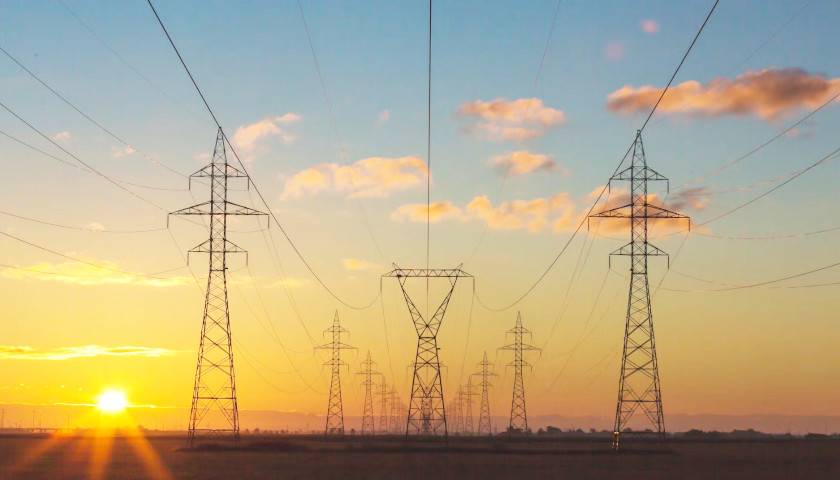It was September 1995, and Tim Walz’s Nebraska National Guard unit, the 1-168th Field Artillery, upgraded to the M109A5 self-propelled howitzer. One of its capabilities was firing nuclear artillery shells.
Read MoreTag: nuclear
Commentary: Stumbling into Nuclear War
In a story that deserves more attention, Ukraine recently attacked a Russian early warning radar facility designed to detect nuclear attacks. This insane action conferred no military advantage on Ukraine—the station monitored potential launches in the Middle East—but it carried with it the risk of igniting a nuclear war. From the perspective of the country being attacked, the only reason to attack an early warning system would be to blind one’s enemy as a prelude to a nuclear attack.
Nuclear war is the most dangerous game. It means the end of civilization. If this horror show ever comes to pass, it is likely more than half of the people on our planet will die. Many console themselves that they’ll die instantly and that most of the consequences will borne by others, but no one can be sure.
Read MoreStudy Grades Natural Gas as Best Source for Reliability, Affordability and Environmental Impact
A new study finds that natural gas is the most effective energy source meeting growing energy demands affordably and reliably, while balancing environmental and human impact.
The “Grading the Grid” study by the Mackinac Center for Public Policy, a pro-free market nonprofit, and Northwood University rates natural gas, coal, petroleum, nuclear, hydroelectric, wind, solar and geothermal generation sources on their reliability, environmental and human impact, cost, innovation and market feasibility.
Read MoreCommentary: Electric Transmission Buildout Could Cost Americans Trillions of Dollars
Though windmills and solar panels get the headlines, the big energy topic in Washington is electric transmission. Whether it is Congress’s newfound interest in permitting reform, the U.S. Department of Energy’s new Grid Deployment Office, or the Federal Energy Regulatory Commission’s (FERC) upcoming final rule on transmission planning and cost allocation, how to build and pay for long-range transmission to connect generators to customers is considered the final piece in the quest to meet net-zero goals.
Like so many issues in Washington, the need for more transmission lines is accepted without question and the costs are not considered. But for American consumers, especially low-income and elderly, as well as small businesses and energy intense manufacturers, building new transmission lines could result in much higher monthly bills and leave them on the hook for stranded assets.
Read MoreCommentary: Onsite Nuclear Provides 24/7 Clean Power
Most of us don’t think about the huge data centers that enable our constant internet usage. But they’re essential to our civilization—and they consume enormous amounts of electricity 24/7.
Powering these data centers is fast becoming a problem. Northern Virginia, for instance, hosts the largest concentration of data centers in the world. Tech giants like Amazon, Facebook, Microsoft, and Google have invested $126 billion in Virginia data centers. And the region’s insatiable appetite for power continues to grow due to surging demand for cloud computing services.
Read MorePoll: Plurality of Americans Believes We Are Heading for Next World War
As the war in Ukraine and tensions with China intensify, more Americans fear we’re on the brink of World War III, according to a new Convention of States Action poll.
The survey of more than 1,000 U.S. voters, conducted Feb. 22-26 by The Trafalgar Group, finds more than 43 percent of respondents worry that Russia’s continued war and threats against other European nations, as well as China’s aggressive actions, have put the world on the precipice of another global conflict.
Read MoreCommentary: The New Nuclear Arms Race
The Defense Department just released its annual report on China’s military power, and the report undermines those in the Biden administration who are promoting nuclear arms reductions with Russia and the adoption of a policy of “no first use” of nuclear weapons — a policy that is opposed by most of America’s allies.
The Pentagon’s report could not be clearer: “Over the next decade, the PRC aims to modernize, diversify, and expand its nuclear forces.” It is “expanding the number of its land-, sea-, and air-based nuclear delivery platforms and constructing the infrastructure necessary to support this major expansion of its nuclear forces.” This includes the construction of “fast breeder reactors and reprocessing facilities” that will enable China to “produce and separate plutonium.”
The report projects that the PRC will have up to 700 deliverable nuclear warheads by 2027, and perhaps 1,000 by 2030, significantly more than the Pentagon projected in last year’s report. China has what the report calls a “nascent ‘nuclear triad,’” with the capability to launch nuclear missiles from land, sea, and air platforms. It has expanded its silo-based force and moved to a “launch-on-warning” posture. Last year, the PLA “launched more than 250 ballistic missiles for testing and training,” a number greater then the rest of the world combined. It is growing its inventory of DF-26 intermediate range ballistic missiles (IRBMs) and intercontinental ballistic missiles (ICBMs), and those missiles are capable of launching multiple independent warheads — known as MIRV capabilities. The CCP has ordered the construction of “hundreds of new ICBM silos” and is “doubling the number of launchers in some ICBM units.” China’s CSS-10 Mod 2 ICBM has a range of 11,000 kilometers, which makes it capable or reaching most targets within the continental United States. China is also investing in space and counterspace capabilities, including kinetic-kill missiles, orbiting space robots, and ground-based lasers.
Read MoreOhio House Speaker Defends Nuclear Bailout as Key to Saving Jobs, Avoiding Energy Dependency
In the days before it passed in the Ohio House, Speaker Larry Householder argued that state aid for the nuclear industry was appropriate because it produces the bulk of the state’s clean energy. Householder, R-Glenford, appeared on the TV program “The State of Ohio” and went on the attack…
Read MoreOhio House Approves Controversial Nuclear Bailout Bill
by Todd DeFeo The Ohio House approved a controversial bill that proponents say will preserve carbon-free energy production and that opponents say is a bailout of the nuclear industry in the state. If it becomes law, House Bill 6 would create a new Ohio Clean Air Program to subsidize…
Read MoreConsumers Would Pay More Under Ohio Nuclear, Coal Bailout
by Tyler Arnold Legislation that would bail out nuclear and coal power companies passed the House Energy and Natural Resources Committee Thursday. To pay for the bailout, consumers would be charged an extra one dollar every month on their utility bills for the next six years. The fee is…
Read MoreOnce a Stable and High-Paying Career, Workers at Nuclear Plants Now Fear for Their Jobs
by Jason Hopkins Nuclear plant engineers are highly trained professionals with high-paying salaries, but the beleaguered nuclear industry is putting their jobs at risk all across the country. The country’s nuclear fleet is suffering under a grim market. Competing against cheap natural gas and subsidy-backed renewables, many nuclear facilities…
Read More










